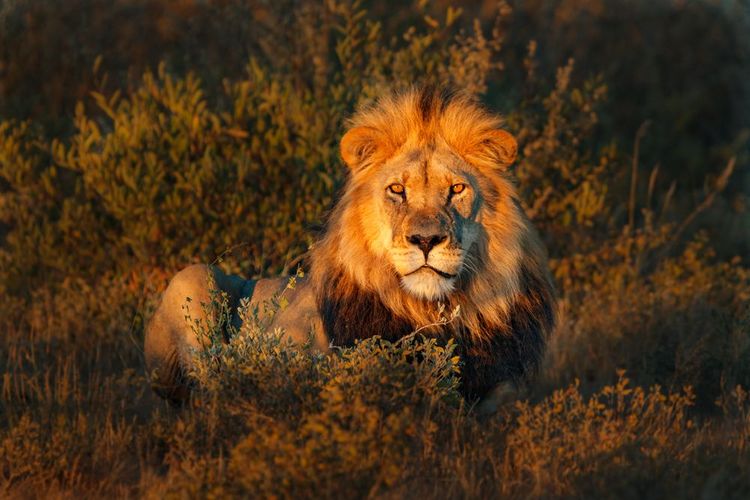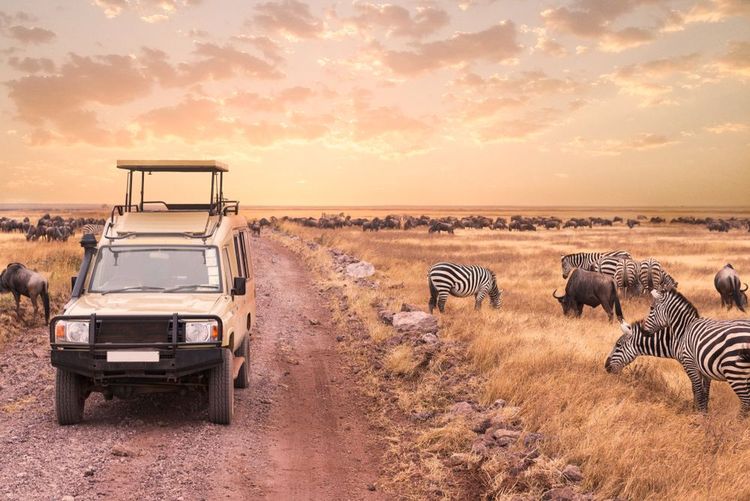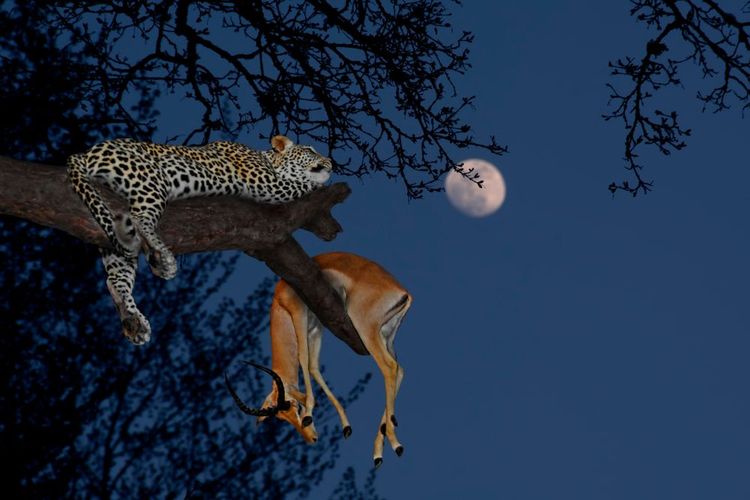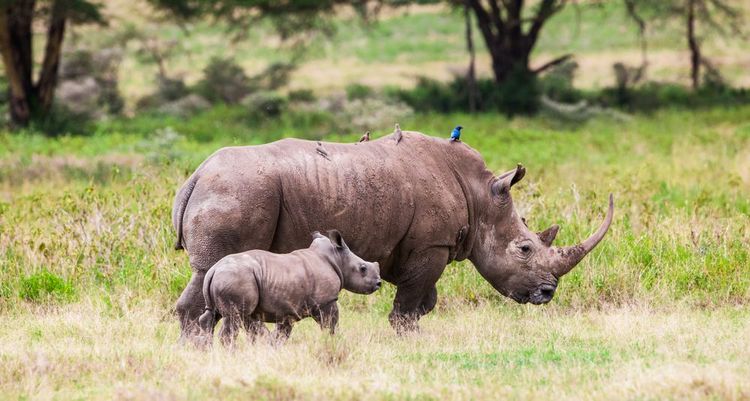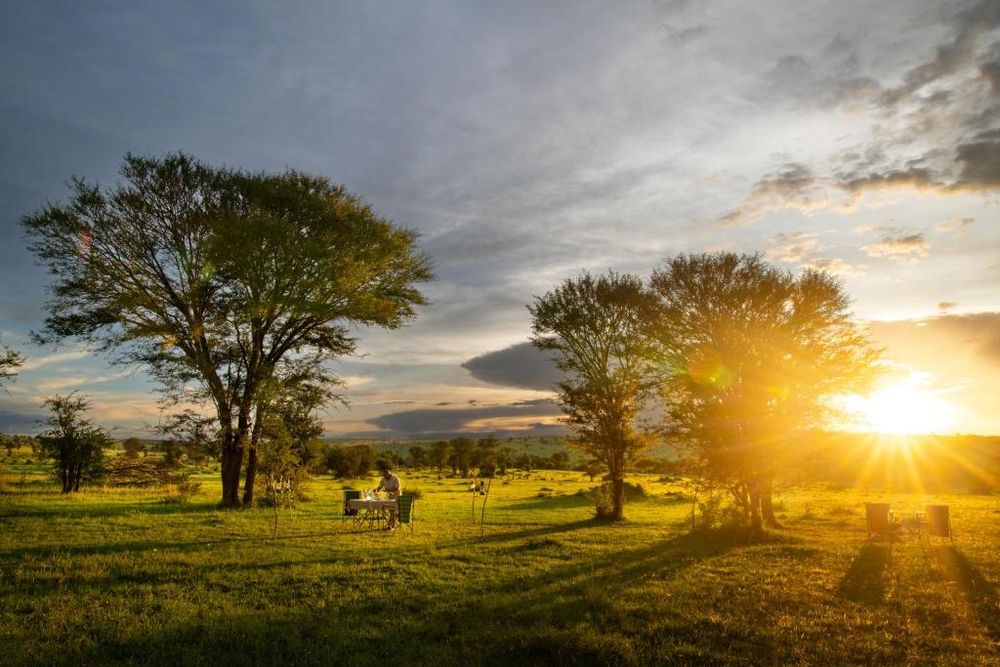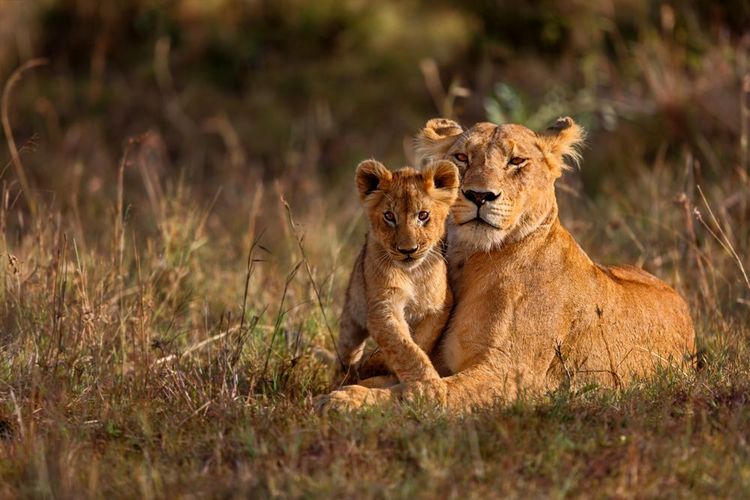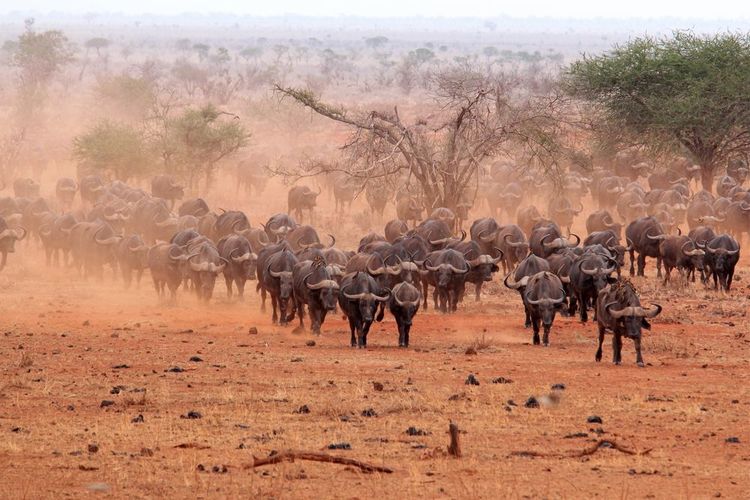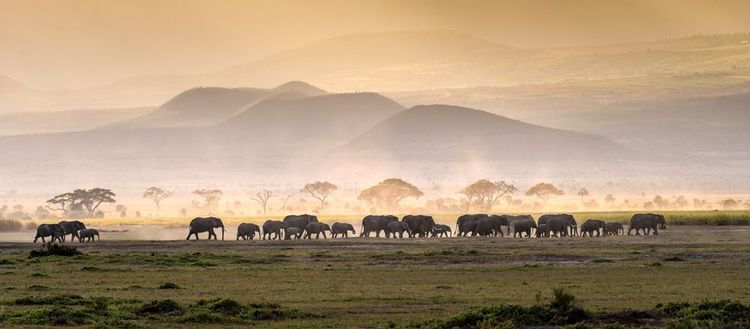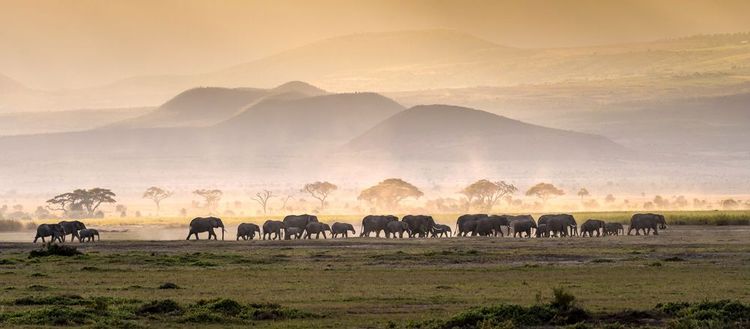The endless plains of the Serengeti are home to millions of animals that roam the land. In the past, before the park was fully classified as a national park and protected, the Masai warriors, a people from East Africa, shared these vast spaces with them. The term "Big Five" is derived from the original animal hunters. The Big Five represent the five most difficult and dangerous animals for the Masai to hunt. They are lions, elephants, rhinos, buffalo and leopards. Unfortunately, some of these species are now endangered or threatened with extinction. However, by taking part in the safaris, paying your entrance fees and choosing a responsible way of visiting the park, you can do your bit to help save the animals. What's more, tourism around the park creates jobs and offers an alternative to poaching.
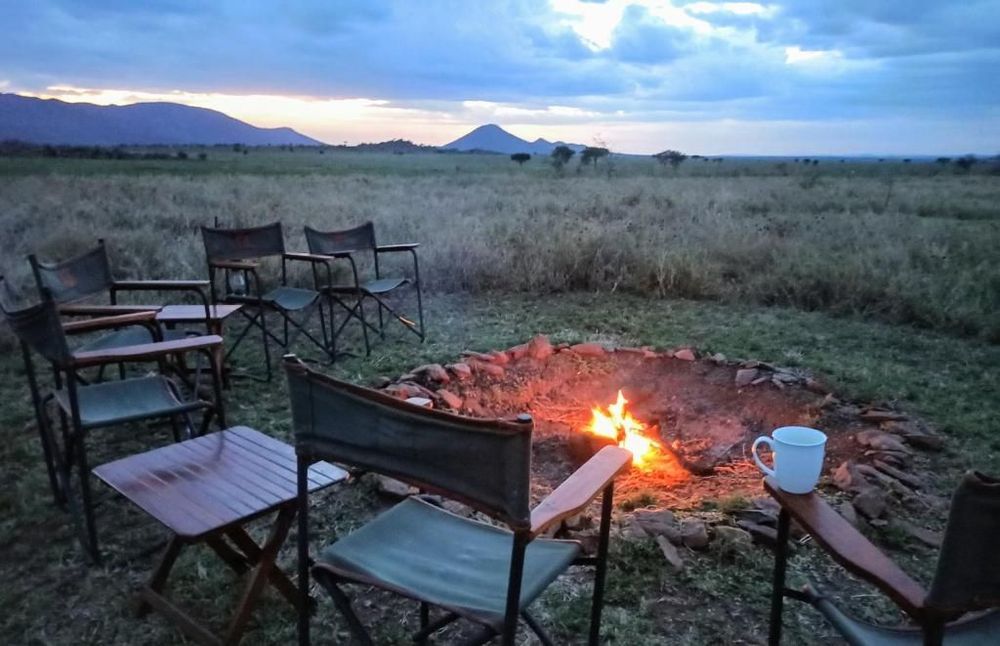 Serengeti
Serengeti
